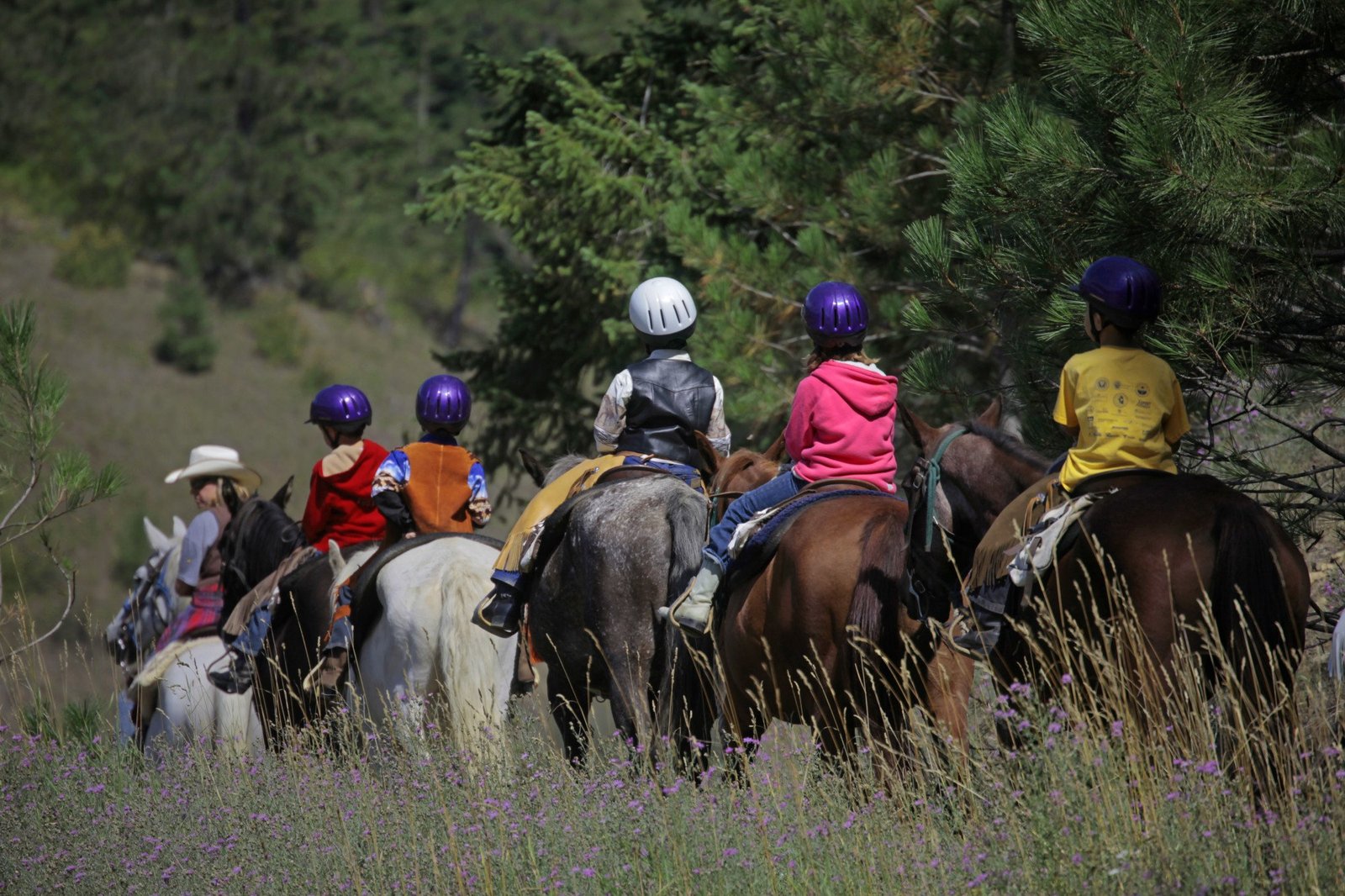
9 Tips for Teaching Horseback Riding Lessons
Teaching horseback riding lessons can be a rewarding and fulfilling experience. Not only do you get to share your passion for horses with others, but you also have the opportunity to shape and develop new equestrians.
However, teaching horseback riding lessons requires more than being a skilled rider. To effectively teach, you must have a deep understanding of the equestrian industry and a positive attitude.
In this article, we will discuss nine tips for teaching horseback riding lessons that will help you become a successful and effective instructor.
Table of Contents
1. Know Your Audience
Each student who comes to you for horseback riding lessons will have unique backgrounds, goals, and learning styles. As an instructor, you are responsible for understanding each student’s needs. You must tailor your teaching approach accordingly.
Take the time to get to know your students by asking them questions about:
- Their previous experience with horses
- Their riding goals
- Any fears or concerns they may have
This will help you create a personalized lesson plan catering to their needs.
2. Focus on Safety
Safety should always be the top priority when teaching horseback riding lessons. Before each class, make sure that both you and your students are wearing appropriate safety gear. This can include helmets, boots with a defined heel, and protective vests.
Additionally, ensure that the horse used for the lesson is well-trained and suitable for the student’s skill level. Moreover, regularly check equipment such as saddles and stirrups for any signs of wear and tear to prevent accidents.
Creating a safe and secure environment for your students will not only protect them from harm. This will also instill confidence in their riding abilities.
3. Start with the Basics
For new horseback riders, it is essential to start with the basics. Familiarize them with how to mount and dismount a horse, how to hold the reins correctly, and basic riding aids. It may seem simple to experienced riders, but these fundamental skills are crucial for building a strong foundation in horseback riding.
Moreover, don’t overwhelm your students with too much information in one lesson. Break down each skill into smaller steps and focus on mastering one at a time. This approach will help prevent frustration and keep your students motivated.
4. Use Positive Reinforcement
Positive reinforcement is a powerful tool in teaching horseback riding lessons. Instead of solely focusing on correcting mistakes, praise your students when they do something well. This will boost their confidence and encourage them to continue improving.
You can also use rewards such as stickers or treats to motivate your students and make learning more enjoyable. You can also try implementing a points system where students can earn points for completing tasks correctly, which they can then redeem for prizes. However, be careful not to overdo it with rewards, as it may create a sense of entitlement in your students.
5. Demonstrate Proper Techniques
As an instructor, you must have excellent equestrian skills yourself. Make sure to demonstrate proper techniques and form to your students.
This will give them a visual representation of what they are learning. It will also help them understand how to communicate with their horse properly.
Additionally, you can use demonstrations to correct any mistakes your students may be making. Avoid being critical or impatient when doing so, as this may discourage your students from continuing lessons.
6. Communicate Effectively
Effective communication is vital in teaching horseback riding lessons. Make sure to use clear and concise instructions when giving directions to your students. Use positive and encouraging language, even when correcting mistakes.
It is also essential to listen to your students and address any questions or concerns they may have. This will help build trust and open lines of communication between you and your students.
7. Emphasize the Importance of Proper Horse Care
In addition to riding skills, teaching horseback riding lessons should include educating students on proper horse care. This includes grooming, feeding, and maintaining a clean and safe living environment for the horses.
Grooming is not just about making the horse look good but also promotes a healthy and strong bond between the rider and the horse. Teach your students how to properly brush, pick out hooves, and check for any signs of injury or illness while grooming.
Additionally, discuss the importance of proper nutrition for horses and how to recognize signs of good or poor health. Teaching students about basic veterinary care, such as checking for injuries and monitoring vital signs, will also help them become responsible and knowledgeable equestrians.
Maintaining a clean and safe living environment for the horses is also crucial for their well-being. Teach your students how to do the following:
- Properly clean stalls
- Remove manure
- Maintain a tidy barn
Educate them on the importance of regular exercise and turnout for horses as well.
8. Incorporate Fun and Variety
Horseback riding lessons should not be all work and no play. Incorporate fun and variety into your lessons to keep your students engaged and interested. This can include playing games on horseback and trail rides or trying out different riding styles.
By making lessons enjoyable, you will also create a positive learning environment for your students. They will also be more motivated to attend classes and continue improving their skills.
9. Stay Educated
The equestrian industry constantly evolves, introducing new techniques and equipment regularly. As an instructor, staying educated and up-to-date with the latest developments in the industry is crucial.
Attend clinics, workshops, and conferences to continue learning and improving your teaching skills. You can also join online communities and forums or be partners with EQuerry Co equestrian media agency to stay updated on industry news and connect with other equestrian professionals.
Utilize These Tips When Giving Horseback Riding Lessons
Teaching horseback riding lessons requires strong equestrian skills, excellent communication, patience, and a passion for sharing your knowledge. By following these nine tips, you can become a successful and effective horseback riding instructor.
Remember to prioritize safety, tailor your teaching approach to each student, and stay educated about the ever-changing equestrian industry.
Now go out there and inspire the next generation of equestrians!
Was this article helpful? For more like this, check out the rest of our site.
Last Updated on October 12, 2023













